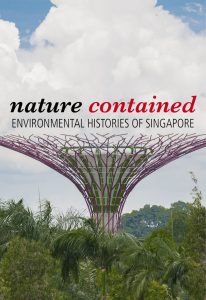The Raffles Museum and the Fate of Natural History in Singapore
May 18, 2020

 Over 40 years ago, the International Council of Museums (ICOM) first organised International Museum Day on 18 May 1977, which was celebrated by museums worldwide. Its purpose was to raise awareness of the function of museums, how they are ‘an important means of cultural exchange, enrichment of cultures and development of mutual understanding, cooperation and peace among peoples’ (ICOM, 2019). Museums all around the world organise events or programmes to commemorate the day.
Over 40 years ago, the International Council of Museums (ICOM) first organised International Museum Day on 18 May 1977, which was celebrated by museums worldwide. Its purpose was to raise awareness of the function of museums, how they are ‘an important means of cultural exchange, enrichment of cultures and development of mutual understanding, cooperation and peace among peoples’ (ICOM, 2019). Museums all around the world organise events or programmes to commemorate the day.
Associate Professor Timothy P. Barnard (NUS Department of History) explores the history of the Lee Kong Chian Natural History Museum (LKCNHM) pre-1988 in Chapter 6 of his book, Nature Contained (NUS Press, 2014), ‘The Raffles Museum and the Fate of Natural History in Singapore’. He investigates what is the first and only natural history museum in Singapore, its troubled past and the turbulent transitions of its specimen collection as it shifted from place to place before finally settling down at its current home in NUS.
The LKCNHM can trace its history back to the Raffles Museum (now the National Museum of Singapore) which was first conceived in 1823 when Singapore was a British colony. In its heyday, the Raffles Museum saw great amounts of research being done within its walls and was the central institute for naturalists, scientists and curators of natural history during the 19th and early 20th century. In particular, two of the museum’s landmark specimens were those of a female rhinoceros and a 13-meter blue whale skeleton washed ashore near Melaka in 1892.
However, political transitions and upheavals in Singapore prompted the government to re-examine the need for a natural history museum and its collection, sparking what was to be a 30-year battle for a space to house the natural history collection as its caretakers struggled to justify, protect and preserve it in light of a country whose concerns were not with environmental research but political and economic independence.
Get the book here: https://nuspress.nus.edu.sg/products/nature-contained
